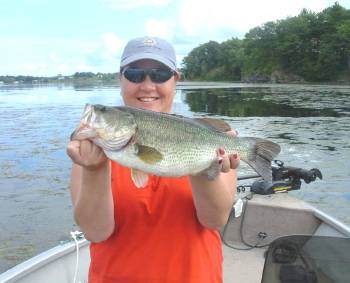|
Lake Champlain is the sixth largest freshwater lake in the United States. It is 120 miles long and just over 10 miles wide at at its widest point. The lake has a maximum depth of just under 400 feet deep. Over 70 islands may be found in its clear waters. The lake forms a border with NY and Vermont on its eastern side. To the west it borders the Adirondack Mountains. There are over 30 major tributaries that drain into Lake Champlain. The outflow for Lake Champlain is the Richelieu River where it flows into the St. Lawrence River. At one time Lake Champlain briefly became the nation's sixth Great Lake when President Clinton signed Senate Bill 927. Following a small uproar the Great Lake status was rescinded.
Lake Champlain is home to the following species of fish Atlantic Salmon, Black Bullhead, Black Crappie, Bowfin, Brook Trout, Brown Bullhead, Brown Trout, Burbot, Chain Pickerel, Channel Catfish, Common Carp, Lake Sturgeon, Lake Trout, Largemouth Bass, Longnose Gar, Muskie, Northern Pike, Rainbow Trout, Smallmouth Bass, Rock Bass, Steelhead, Walleye, Sauger, Suckers, Yellow Bullhead, and Yellow Perch. The forage base consist of Alewives, Blueback Herring, Smelt and Mooneyes.
Lake Champlain Reciprocal Fishing License This agreement allows anglers from either state to fish both state's shared boundary waters of Lake Champlain. Specifically, the agreement allows reciprocal fishing in the "Main" and "South" portions of Lake Champlain between New York and Vermont. Four bays, lying wholly within their State's borders, are not included in the agreement. South Bay in New York, and the Inland Sea, Mallett's Bay and Missisquoi Bay in Vermont are excluded. Anglers fishing on these waters must have a fishing license from the State in which the waterway is located. In addition, rivers that flow into Lake Champlain are excluded from the reciprocal agreement.
|







